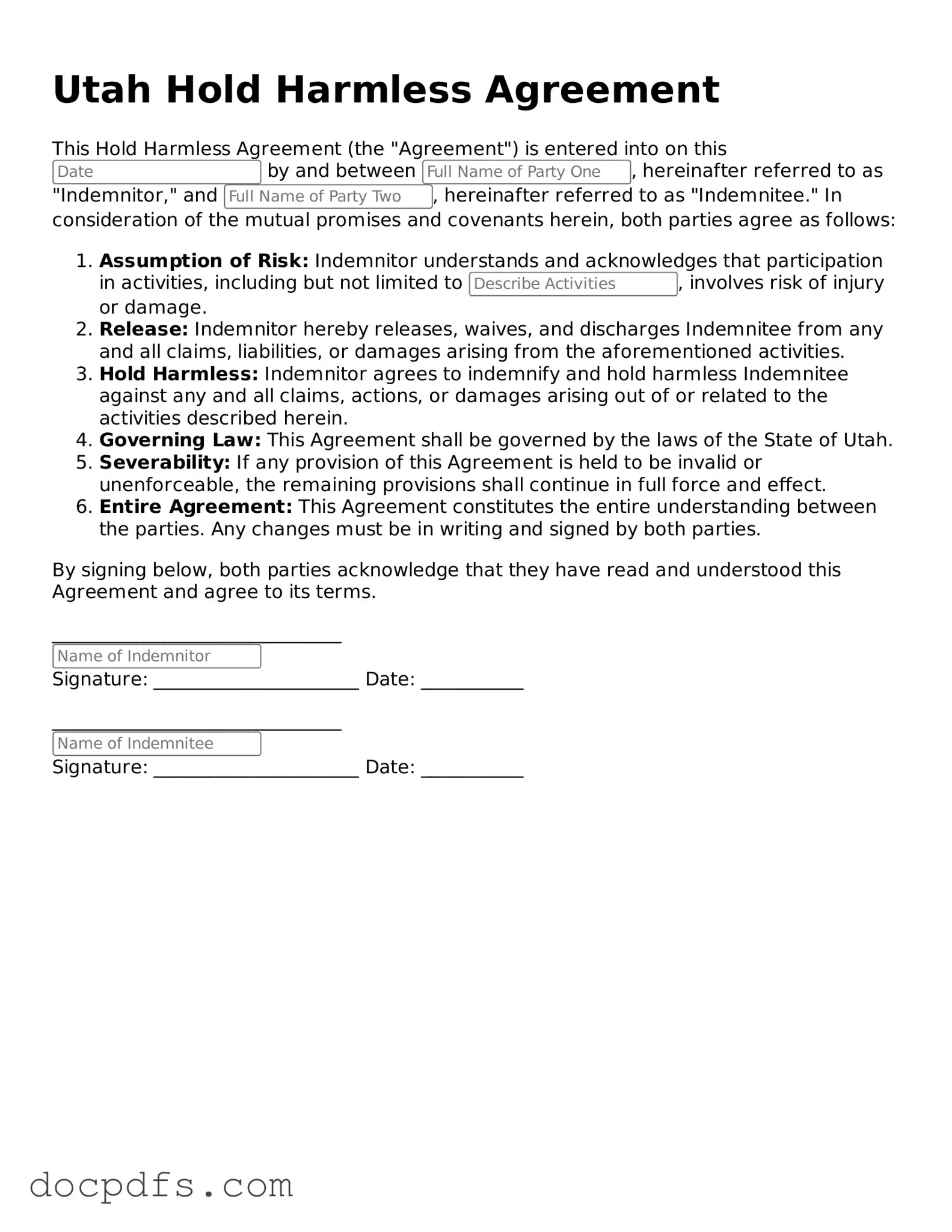What is a Utah Hold Harmless Agreement?
A Utah Hold Harmless Agreement is a legal document designed to protect one party from liability for any damages or injuries that may occur during a specific activity or event. This agreement typically involves two parties: one party agrees to assume the risk of potential injuries or damages, while the other party is released from liability. It is commonly used in various situations, including recreational activities, construction projects, and rental agreements.
Who should use a Hold Harmless Agreement?
Individuals or organizations engaging in activities where there is a potential risk of injury or damage should consider using a Hold Harmless Agreement. This includes:
-
Event organizers
-
Property owners renting out facilities
-
Contractors and subcontractors in construction
-
Sports organizations
By using this agreement, parties can clarify their responsibilities and protect themselves from unforeseen liabilities.
What are the key components of a Hold Harmless Agreement?
A Hold Harmless Agreement typically includes the following components:
-
Identification of Parties:
Clearly identify all parties involved in the agreement.
-
Description of Activity:
Provide a detailed description of the activity or event for which the agreement is being executed.
-
Assumption of Risk:
A statement where the party assumes all risks associated with the activity.
-
Release of Liability:
A clause that releases one party from liability for injuries or damages.
-
Signature and Date:
Both parties must sign and date the agreement to make it valid.
Is a Hold Harmless Agreement legally binding in Utah?
Yes, a Hold Harmless Agreement can be legally binding in Utah, provided it is properly executed and meets the necessary legal requirements. It is essential that both parties fully understand the terms of the agreement before signing. However, certain limitations may apply, particularly in cases of gross negligence or willful misconduct.
Can a Hold Harmless Agreement be modified after it is signed?
Yes, a Hold Harmless Agreement can be modified after it is signed, but this typically requires mutual consent from all parties involved. Any modifications should be documented in writing and signed by all parties to ensure clarity and enforceability.
What happens if one party breaches the Hold Harmless Agreement?
If one party breaches the Hold Harmless Agreement, the other party may seek legal remedies. This can include seeking damages for any losses incurred as a result of the breach. It is advisable to consult with a legal professional to understand the specific implications and options available in such situations.
Are there any situations where a Hold Harmless Agreement would not be enforceable?
Yes, there are situations where a Hold Harmless Agreement may not be enforceable. For example:
-
If the agreement attempts to release a party from liability for intentional wrongdoing or gross negligence.
-
If the agreement is deemed unconscionable or unfair.
-
If it violates public policy.
Each case is unique, and it is important to consider the specific circumstances surrounding the agreement.
How can I ensure my Hold Harmless Agreement is effective?
To ensure the effectiveness of a Hold Harmless Agreement, consider the following steps:
-
Consult with a legal professional to draft or review the agreement.
-
Use clear and concise language to avoid ambiguity.
-
Ensure that all parties fully understand the terms before signing.
-
Keep a signed copy for your records.
Taking these steps can help protect all parties involved and minimize potential disputes.
